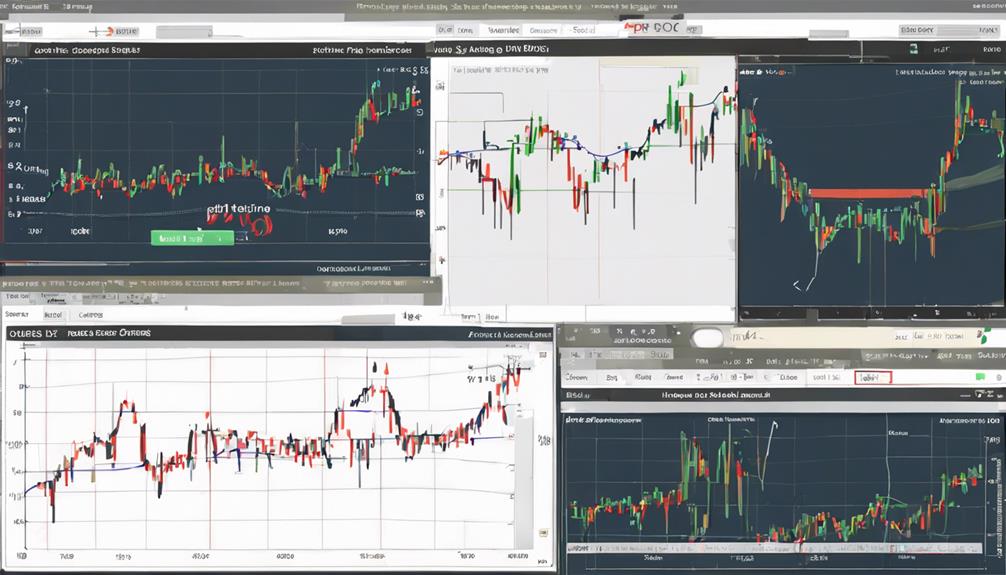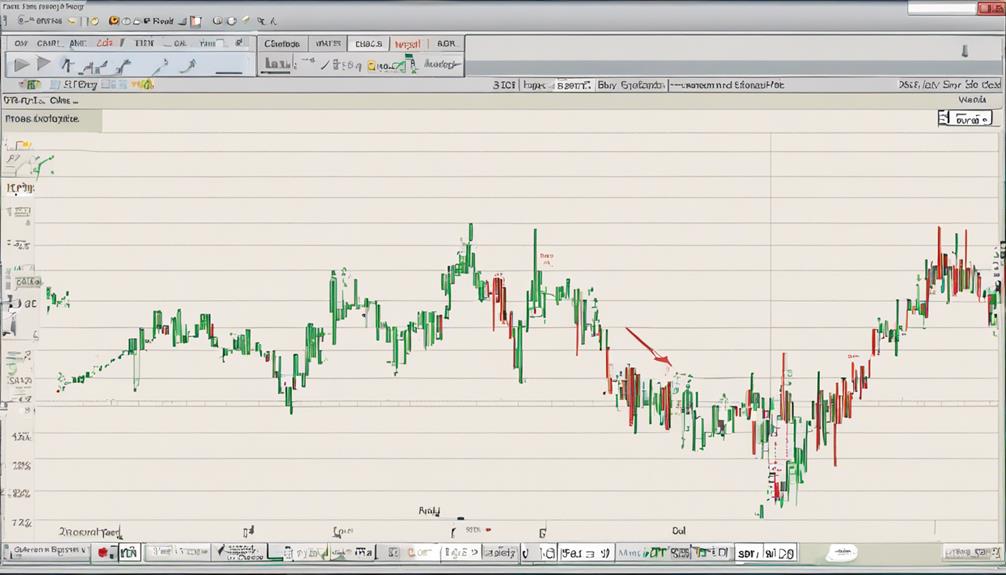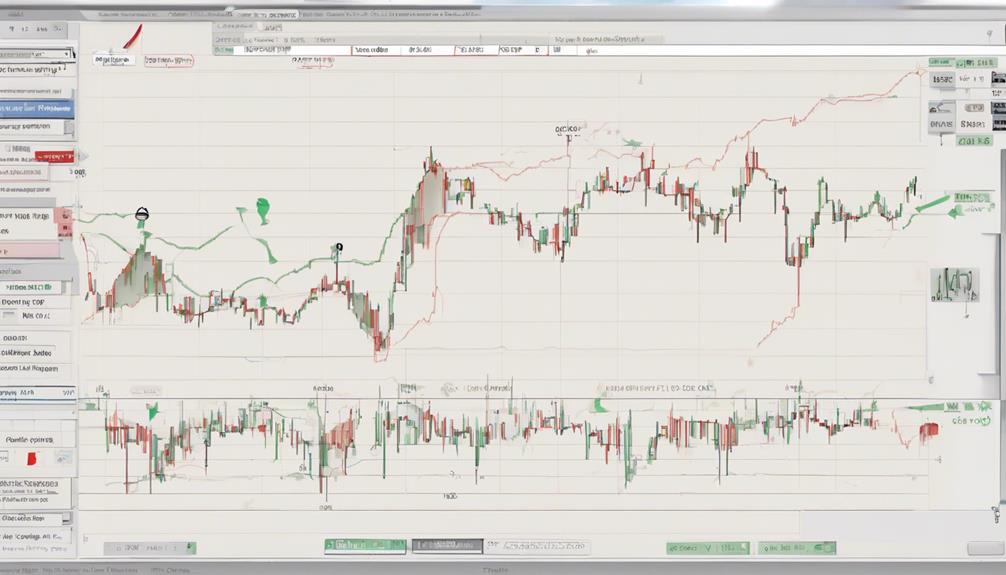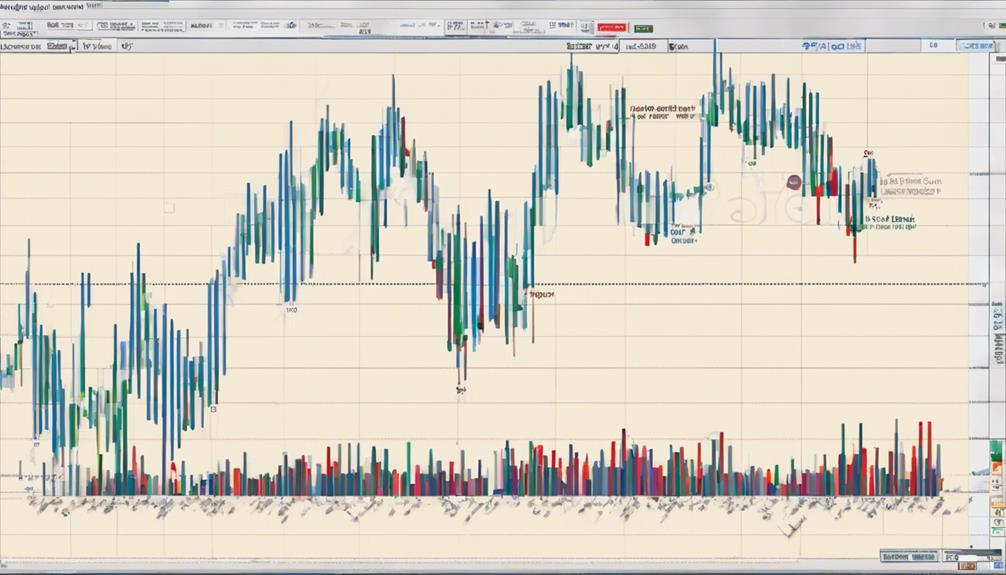Exploring the depths of the ROC Indicator reveals a nuanced tool that goes beyond mere price analysis. From pinpointing potential trend changes to fine-tuning entry and exit points, the ROC Indicator offers traders a way to navigate the complexities of the market with precision.
By understanding its inner workings and practical applications, investors can unlock a world of possibilities in their trading strategies. Delving into the ROC Indicator's intricacies promises a journey into a realm where informed decisions and strategic insights converge, shaping the path to trading success.
ROC Indicator Calculation
When calculating the ROC indicator, the percentage change between the current price and the price n periods ago is determined through a specific formula.
The Rate of Change (ROC) is a technical indicator that measures the rate at which a security's price changes over a specified period.
The formula for ROC involves subtracting the Closing Price n periods ago from today's Closing Price, dividing that difference by the Closing Price n periods ago, and then multiplying by 100 to express the result as a percentage.
This calculation provides traders and analysts with valuable insights into the momentum of a security's price movement. Positive ROC values indicate an upward trend, signaling potential buying opportunities, while negative ROC values suggest a downward trend, indicating potential selling opportunities.
Interpretation of ROC Indicator

Building on the insights gained from calculating the ROC indicator, interpreting this technical analysis tool involves analyzing the percentage change in price between the current value and the price n periods ago to gauge the momentum and potential trends in a security's price movement.
- Identifying Overbought and Oversold Conditions: The ROC indicator helps traders identify overbought and oversold conditions in the market. When the ROC value is significantly high, it may indicate that the security is overbought, suggesting a potential reversal. Conversely, very low ROC values could signal that the security is oversold, potentially indicating a buying opportunity.
- Analyzing Current Momentum: Positive ROC values typically indicate an upward trend in prices, while negative values suggest a downtrend. By monitoring the ROC's direction and magnitude, traders can assess the current momentum of a security and make informed trading decisions based on this information.
- Spotting Divergences and Trend Changes: ROC can be used to detect divergences between the indicator and the price chart, which may signal potential upcoming trend changes. Additionally, zero-line crossovers in ROC can indicate shifts in trend direction, providing valuable insights for traders to adjust their trading strategies accordingly.
Trading Strategies With ROC Indicator

Utilizing the ROC indicator in trading strategies requires a thorough understanding of its signals and alignment with price trends to make informed and precise trading decisions. Traders can leverage the ROC indicator to identify overbought conditions, characterized by significantly high values, indicating a potential reversal or correction in price. Conversely, ROC can also signal oversold market conditions when it shows notably negative values, suggesting a possible buying opportunity. Furthermore, crossovers of the ROC indicator with the zero line can indicate shifts in momentum and potential trend changes, providing traders with valuable insights into market dynamics.
In trading strategies, it is crucial to use the ROC indicator for confirmation signals regarding trend direction and strength. By aligning the ROC signals with price trends, traders can make more accurate decisions when entering or exiting trades. This alignment helps traders to not only anticipate potential market movements but also to confirm the validity of their trading strategies, ultimately leading to more successful trading outcomes.
Advantages of ROC Indicator

The ROC indicator stands out for its straightforward calculation method, offering traders valuable insights into price dynamics through percentage changes between current and past prices.
When considering the advantages of the ROC Indicator:
- Identification of Overbought and Oversold Conditions: ROC helps traders in pinpointing overbought and oversold conditions in the market, which are crucial for determining potential trend reversals.
- Enhanced Trading Strategy: By incorporating the ROC indicator into their technical analysis, traders can confirm the direction of the price trend and improve their trade timing, leading to more informed decision-making.
- Use in Divergence Analysis: The ROC Indicator can be utilized to identify divergences between price movements and the ROC values, signaling potential shifts in momentum. This feature enhances the effectiveness of the ROC indicator when integrated into trading strategies alongside other momentum indicators like the Guppy Multiple Moving Average.
Limitations of ROC Indicator

Given the ROC indicator's capacity to provide valuable insights into price dynamics, it is essential to acknowledge and address the limitations that can affect its reliability and effectiveness in trading strategies.
The ROC indicator can produce false signals, particularly in choppy or sideways markets, leading traders to make decisions based on inaccurate information. Moreover, it may lag behind sudden price movements, impacting the timeliness of its signals and potentially causing traders to miss opportunities or enter/exit trades at less favorable points.
The effectiveness of ROC is also influenced by market conditions, necessitating adjustments or additional confirmation from other indicators to mitigate risks. Traders often combine ROC with complementary analysis tools to enhance its reliability and accuracy, recognizing that understanding the limitations of ROC is crucial for leveraging it effectively in trading strategies.
How Can I Use the ROC Indicator in Different Scenarios?
When trading stocks, utilize the ROC indicator to assess the momentum of a particular asset. In a bullish market, it can help identify overbought conditions, while in a bearish market, it can signal oversold conditions. Whether day trading or long-term investing, understanding the ROC indicator can guide your decision-making process.
Frequently Asked Questions
How Do You Read a ROC Indicator?
Reading a ROC indicator involves analyzing the percentage difference between the current price and a past price, indicating market momentum. Positive values signal an uptrend, while negative values suggest a downtrend. Traders use ROC to gauge market conditions and make informed decisions.
What Is the Difference Between ROC and RSI Indicator?
"In comparing the ROC and RSI indicators, ROC focuses on price momentum through percentage changes, while RSI evaluates overbought or oversold levels based on recent price strength. ROC is more sensitive to momentum shifts, whereas RSI identifies potential trend reversals."
What Is the Difference Between MACD and Roc?
MACD and ROC differ in function and purpose. MACD tracks trend direction and momentum using moving averages, providing crossover signals for trend changes. In contrast, ROC measures the percentage change in price, highlighting speed and strength of price movements and identifying overbought or oversold conditions.
How Would You Use ROC to Predict the Stock Price Movement?
Utilize ROC as a compass guiding through stock price movements. Identify overbought and oversold conditions for potential reversals or buying opportunities. Watch ROC crossing zero line for momentum shifts. Combine with other indicators for confirmation and tailor trading strategies accordingly.
Conclusion
In conclusion, the ROC indicator serves as a powerful tool for traders to analyze momentum and make informed trading decisions. By calculating the rate of price change, interpreting signals, and implementing appropriate strategies, investors can gain valuable insights into market trends and potential reversals.
Despite its limitations, the ROC indicator remains a valuable asset in the toolkit of traders seeking to enhance their understanding of price movements and optimize their trading effectiveness.
